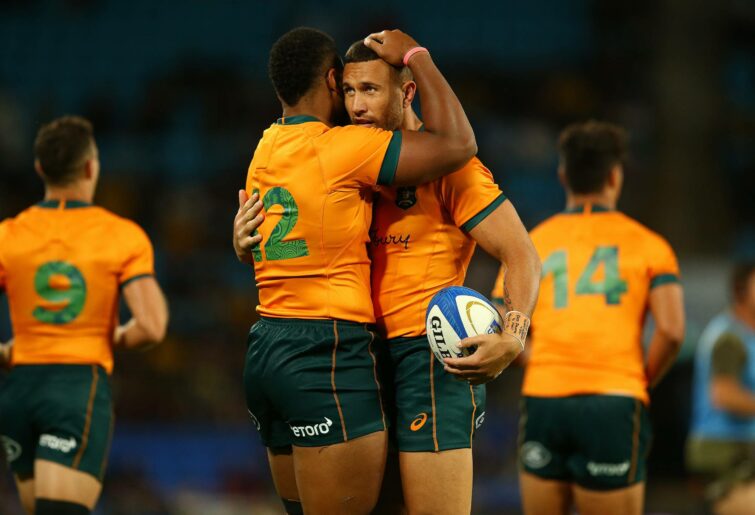Super Rugby is a good competition. It is the feeder for the Wallabies. It provides an income to Rugby Australia (RA) of $40 million per annum, of which some of it is in cash, and some is in promotion via Stan and Channel 9.
It provides a strong competition for the up and coming stars to see how they perform at a high level. That’s the good news, and the positives.
Super Rugby in turn, only provides $40 million per annum, in whatever form or benefit it gives RA. This amount of money is clearly insufficient for Australian rugby to defend itself from the loss of talent overseas.
It is no surprise NZ wants Australia to reduce the number of Super Rugby teams to make the Australian teams more competitive to the NZ teams. NZ quite correctly have suggested dropping the Australian Super Rugby teams to four.
If one uses that trajectory it will become 3, then 2, then eventually 1, just like the Fijian Drua. How much money will Australia then receive from the broadcasters? One could assume it won’t be $40 million per annum.
Strike one against Super Rugby!
Super Rugby the feeder to the Wallabies is the another supposedly benefit. However the feeder system is slowly being undermined, as the best players head overseas.
I wrote an article in March 2013 for The Roar proposing a Giteau Law structure be introduced, as the writing was on the wall that the Wallabies would need the overseas players to fill the weaknesses in the squad.
Australia in 2013 thought it did not need overseas players to strengthen the squad. Now we’re in 2023, eight years after the Giteau Law structure was introduced in 2015, and we can all agree the Wallabies now need all the overseas players for the World Cup, like Will Skelton, Rory Arnold, Quade Cooper et al if the Wallabies are to be competitive.
Eddie Jones is acknowledging that he needs more overseas players and the Giteau Law to be expanded to be unlimited with no minimum threshold. The value of Super Rugby is as a feeder is on the trajectory downwards.
Strike two against Super Rugby!
How much money does RA need to defend itself against the overseas competition? Based on the best players being picked off and leaving overseas, one can conclude $40 million per annum is not enough. By staying in Super Rugby Australian Rugby’s value is capped at $40 million.
It is dictated to by what the broadcasters will offer. RA is effectively a price taker not a price setter. Rugby league earns $400 million per annum from its broadcasting arrangements and the AFL earns circa $650 million. They are also price setters, unlike RA.
There is no “blue sky” in Australia participating in Super Rugby.
Strike three against Super Rugby!
In my opinion Australian rugby should go domestic and leverage club rugby. That is the NSW Shute Shield, Queensland Premier Cup, ACT, Victoria, Western Australia and South Australia club competition.
Australia should copy Japan and have a three tier domestic club rugby competition, with relegation and promotion at the bottom of the tables.
Additionally, Australia has most of the wealth is held in circa $4.5 Trillion in super funds, real estate and 2,750 companies listed on the Australian Stock Exchange, with some cross over.
Then, in my opinion, the Australian clubs who wish to compete will could be owned by a corporate entity, with the players to be employees on tax deductible salaries.
Just like Japan and instead of rugby clubs owned being owned by Toshiba, Toyota, Kobe Steel and Mitsubishi in Australia we could have clubs owned by BHP, Fortescue, Harvey Norman Westpac, ANZ, Cbus, News Corp, AustralianSuper, Pilbara Minerals just to name a few possibles and as examples only.
The clubs in turn would be free to recruit anyone and at any price, no salary caps. Rugby league always poke fun at how rugby union is played by private school boys. I see that as an advantage as they are now the heads of industry and investment (including Gerry Harvey – Scots All Saints College, Bathurst).

Samu Kerevi and Quade Cooper of the Wallabies. (Photo by Jono Searle/Getty Images)
One could see the, for example, BHP Randwick take on the All Blacks, just like they did in 1988 at Coogee Oval and be competitive. That would be possible again under this new structure.
The benefit to the club’s owners, being the advertising profile and specifically the broadcasting income could be split amongst the club’s owners, with a cash contribution paid to Rugby Australia to assist them with their other rugby activities e.g. school, women’s, sevens and all other things rugby.
How much would the broadcasting income earn for a competition like this? At a guess a lot more than $40 million, right? There are going to be many star rugby players from all over the world e.g. NZ, Fiji, Europe, UK playing Australian club rugby.
The broadcasting income to be just a matter of negotiation. This would be new content with an almost unlimited budget. One be aiming for a share of that juicy broadcasting money being paid to AFL and NRL and carving some of it off to the truly international sport of rugby union, played at the highest standard.
Whatever the number it is more than that paltry $40 million per annum being currently received by Rugby Australia.
Why are we still in Super Rugby?





























































































